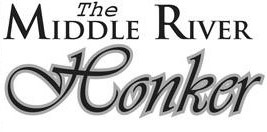When out in the garden this summer I spotted a lot of Bumble Bees. They are a fun bee to watch as they go from flower to flower. They do not sting as readily as other bees.
Bumble bees all belong to the genus Bombus in the family Apidae, the same family as honey bees, digger bees, squash bees, orchid bees, and stingless bees. They have special adaptations for colder weather including their long, thick hair, and are more commonly found in colder climates. Minnesota is home to 24 of the 45 species known from North America. Bumble bees have an annual colony life cycle, starting with the emergence of queens in the spring, colony founding, production of workers, growth of the colony, production of males and queens, mating, and ending with hibernation of newly mated queens.
Bumble bees are better studied than many other native bees, so we know more about their conservation status. Unfortunately, in North America 1 out of 3 species is in decline. The causes of these declines are thought to include habitat loss, pesticides, pathogens, and climate change. Minnesota bumble bee species thought to be in decline include Bombus affinis, Bombus ashtoni Bombus fervidus, Bombus fraternus, Bombus pensylvanicus, Bombus terricola, and Bombus variabilis.
On March 21, 2017, the rusty patched bumble bee, Bombus affinis, became the first bee in the continental U.S. to be given protection by the US Fish and Wildlife Service as an endangered species. Visit the USFWS to get the latest updates on where rusty patched bumble bees have been found and what we can do to help protect them. Minnesota is one of the few places on the planet where we can still find rusty patched bumble bees. We all can help them by planting flowers they prefer, creating nesting habitat by leaving corners of your yard untended and creating woodpiles, and keeping flowers and potential nesting sites free of pesticides. Help scientists and conservationists track populations by joining citizen science efforts to track bumble bees.
Do you think you have seen a rusty-patched bumble bee? Check out a rusty-patched bumble bee identification guide to learn how to tell the rustypatched bumble bee from other bumble bee species.
Helping Bumble Bees
You can help bumble bees by providing them with food and shelter. Bumble bees get all their food from flowers. They visit a wide range of flowers. Their favorites include gooseberry (Ribes), bee balm (Monarda fistulosa), anise hyssop (Agastache foeniculum), asters and many more. To provide shelter, the best option to encourage bumble bee nesting in gardens is to create habitat, rather than putting in “houses”. The basics of what they need are a sheltered space with insulating material.
This can be a compost pile, piles of dried grass at the base of native grasses, or a raised bed that has sticks and logs at the base (look up hugelkultur to learn more). If you are able to leave leaves on the ground and add some logs to leave to rot, they seem to be attracted to those. Some people do make houses that bumble bees can use for nesting. People who put out houses have a 0-10% success rate so it may not be worth the effort compared to habitat creation. If you would like to try, the Bumble Bee Conservation Trust has created a guide.
Guide to MN Bumble Bees
Species level bumble bee identification can be challenging. If you are able to take photos, you can submit them to Bumble Bee Watch where experts will verify your identifications. If you are ready for a challenge, you can print out a free identification for Minnesota bumble bees.
They are a delightful bee to watch out in the garden.

